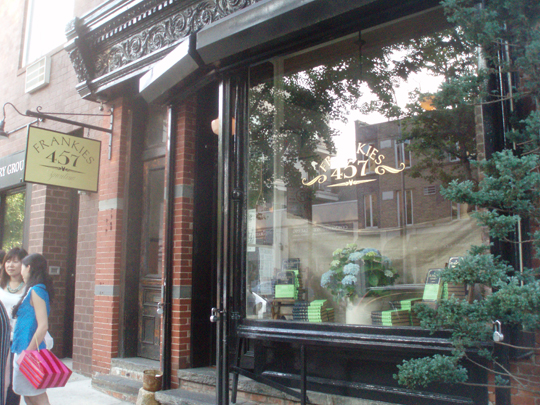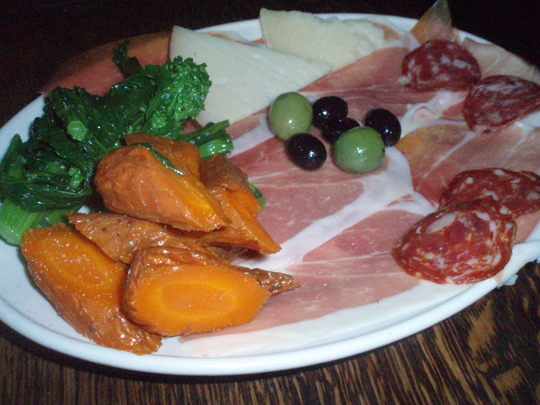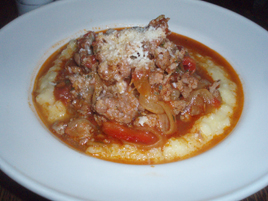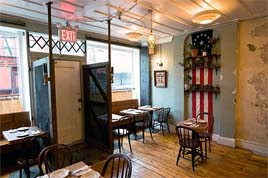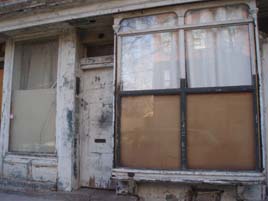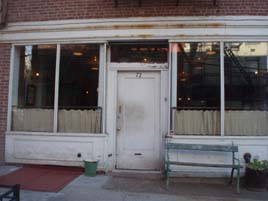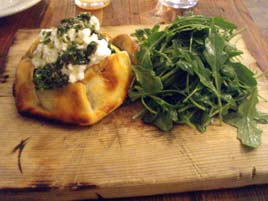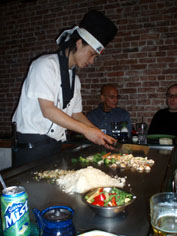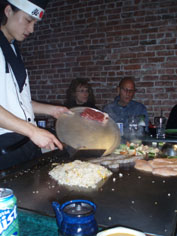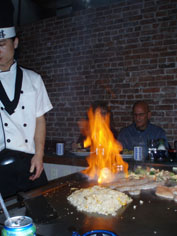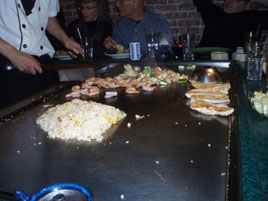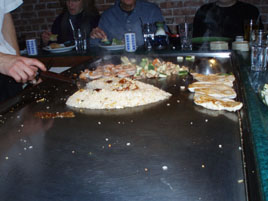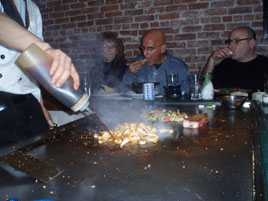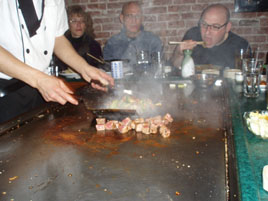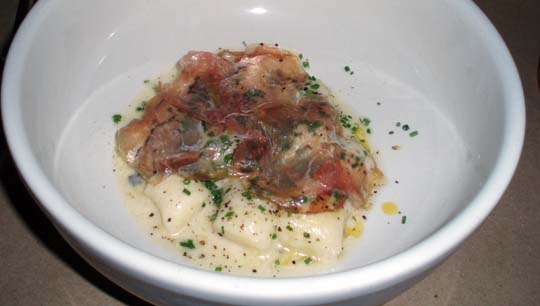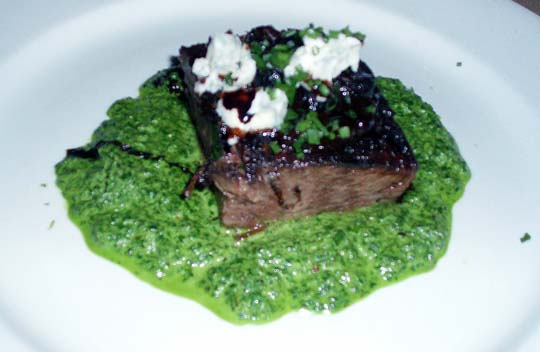Franny's
 Friday, October 14, 2011 at 11:36AM
Friday, October 14, 2011 at 11:36AM 
Note: Franny’s is now located at 348 Flatbush Avenue. The former Franny’s space (reviewed below) is now Marco’s from the same owners.
*
For years, Franny’s was on that long list of Brooklyn restaurants that I’d like to try, if only I could find the time to get there. At an hour and fifteen minutes from home, it’s a bit far for anything other than destination cuisine, which I wasn’t persuaded Franny’s had. A Sunday visit to the Brooklyn Botanic Garden (fifteen minutes’ walk from Franny’s) provided the excuse.
When Frank Bruni pronounced himself “besotted,” and awarded two stars, there was the distinct feel of a Brooklyn grading curve. Having now tried it, I can see somewhat what the fuss is about. Two of the dishes we tried (the appetizers) were fantastic. The pasta was less remarkable, but certainly very good. More about that in a minute.
At 6:00 p.m. on a Sunday evening, they were already quoting a walk-in wait of 40 minutes. I can only imagine what it might be at prime time on a Friday or Saturday. Franny’s does not take reservations, and the outdoor garden seating area had already closed for the season—an unfortunate decision on their part, as the temperature was an unseasonably balmy 75 degrees. Fortuitously, there were two vacant bar stools.
It is a noisy restaurant, and your evening is not unlikely to be punctuated with wailing infants and agitated toddlers. For a restaurant that appeals to that demographic, Frannie’s is wonderful—practically miraculous. If you’re in the area, by all means go, but be prepared with a backup plan or a place to cool your jets if they can’t seat you immediately. As good as Franny’s is, it isn’t worth a long subway ride, only to face an unknown, possibly lengthy wait.
A brick oven is the centerpiece of a half-open kitchen. The aroma of charred pizza crust permeates the restaurant, a terrific advertisement for their signature dish. We weren’t hungry enough to order a whole pie, and it’s a pity the chef doesn’t do more with that oven. Just imagine a pork chop, a whole duck, or even chicken. Instead, you’re limited to salumi (selections $9–17), appetizers ($6–15), pastas (just three offered; $16–17) or pizzas ($14–18).
The menu, re-printed daily, fits on one side of a sheet of stiff (presumably post-consumer) paper, with the now obligatory New Brooklyn list of farmers and suppliers on the reverse side. “Our sour cherries, honey crisp apples, blueberries, basil and kale are grown on Phillip’s Farm in Milford, New Jersey… . Our kitchen grease is converted into biodiesel fuel by Tri-State biodiesel.”
 The cocktails here are reputed to be excellent, although we drank wine by the glass, a wonderful Casia di Cornia Rossa from Tuscany ($10). The nine-page wine and beverage list is far better than you are entitled to expect at a glorified pizza parlor. There’s an ample selection of bottles under $50, but the vast majority are higher than that, which is somewhat jarring when no food item is higher than $18.
The cocktails here are reputed to be excellent, although we drank wine by the glass, a wonderful Casia di Cornia Rossa from Tuscany ($10). The nine-page wine and beverage list is far better than you are entitled to expect at a glorified pizza parlor. There’s an ample selection of bottles under $50, but the vast majority are higher than that, which is somewhat jarring when no food item is higher than $18.
A wood-roasted pork sausage with kale ($15; above left) was the food of the gods: salty, fattening, and bursting with flavor. More, please. A pork cheek and beef tongue terrine ($11; below left) was warm, luscious, and sticky. One hardly needed the excellent warm, crisp bread, but we were glad to have it.


Bucatini all’Amatriciana ($17; above right) was a more modest success: better balance and more deftly seasoned than most chefs could do at home, but unlike the appetizers, not a dish you’ll dream about for days afterward. The portion struck us as a bit small.
The pastas, according to Bruni’s review, had disappeared from the menu for a while, because the chef, Andrew Feinberg, didn’t think he’d mastered them. Perhaps the same timidity explains the absence of real entrées. If so, the chef should get over his hesitation, and start offering them.
On the other hand, when your restaurant is as successful as this one, you probably don’t look to amateur bloggers for advice.
Franny’s (295 Flatbush Avenue between St. Mark’s Ave & Prospect Place, Brooklyn)
Food: *½
Service: *
Ambiance: *
Overall: *
 Franny's in
Franny's in  Brooklyn,
Brooklyn,  Cuisines: Italian,
Cuisines: Italian,  Restaurant Reviews
Restaurant Reviews 







